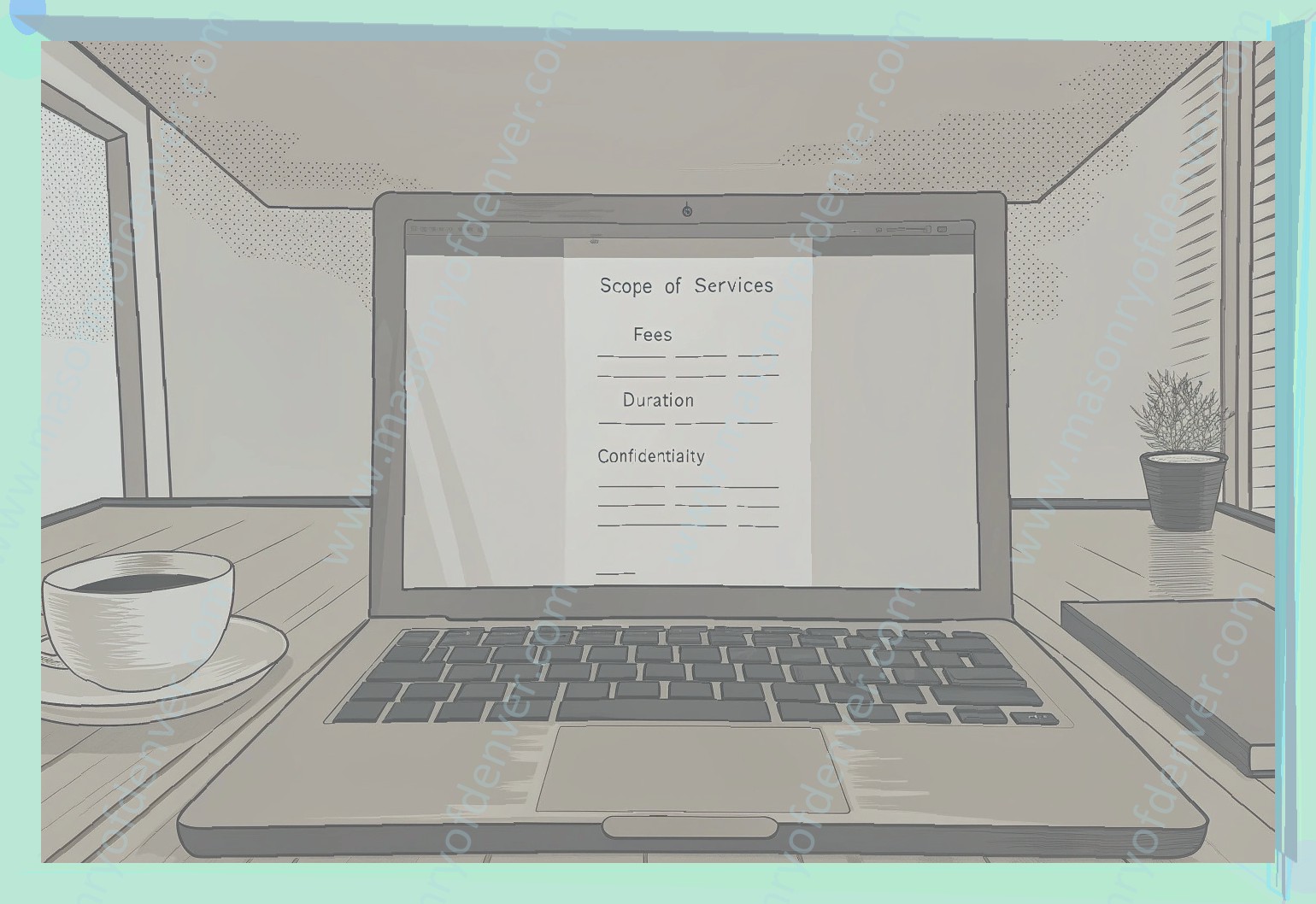Website Maintenance Agreements 101
A website maintenance agreement is a contract between a web development company and a business that outlines the technical support and other services the developer will provide over a set period of time. These agreements are important because they set expectations and help all parties understand the level of service and care they’re entitled to.
Although every website maintenance agreement is subject to negotiation, the most common elements are:
An agreement doesn’t guarantee all of the following will be adhered to, but it does help to clarify expectations to ensure there aren’t any surprises for the developer or the business .
These agreements are essential to keeping a website up and running properly and reducing the need for always having a programmer or developer on payroll just in case issues arise that can’t be handled by an internal employee. They’re also great for providing services on a per-need basis, oftentimes at a fraction of what hiring a full-time employee would cost.

Essential Components of a Maintenance Agreement
A maintenance agreement for your website should spell out the scope of the service, the fees or hourly rates, the duration of the relationship and any confidential or proprietary information that will be disclosed as part of providing the service. If you allow the provider to access your website so that it can fix issues on its own, be sure to include a disclaimer of liability in case the provider accesses something accidentally that it shouldn’t. The maintenance agreement should also contain a warranty about the work performed so that if the scope of work does not cure the specific problem you had with the site, you can purchase additional work without a second contract.
Pros of Using PDF Format
A PDF (Portable Document Format) is the most universal way to exchange and preserve digital documents. When you create a business terms document for your website, having a PDF version is a must. Furthermore, choosing the right PDF creation tool is very important to the quality and overall usability of the document.
The added benefits of using a PDF version for your website maintenance agreement are as follows: Ease-of-Use: PDF is a universal file format, so the document will look the same on any device (MAC, PC, Tablet, Phone, etc.) and in any environment (Operating System, Browser, Email, Cloud Drive, etc.). The same is true for your customers as they view the document. We get a lot of clients with older MS Word versions who have formatting issues when trying to share the terms document with their Word version.
Security: A PDF version of a document can only be edited by using 3rd-party tools like Adobe Acrobat. If the document is only available as a Word document, it’s very difficult for you to control the content once your customer starts working on it. Once a document is in PDF format though, you can safely consider that copy to be an official document. You don’t have to worry about old Word document copies being "mis-placed" by anyone in your supply chain as the document only comes with one controlled copy.
Compatibility: PDF documents will work with all modern web browsers (Chrome, Firefox, IE/Edge, Safari, etc.), with unlimited storage in the cloud, so you can be sure your website visitors can always download or view your terms document from any location.
This is not an exhaustive list of benefits for a PDF format, but hopefully gives you an idea of some of the problems that can be prevented while creating a usable site terms document for your website.
How to Create a Website Maintenance Agreement PDF
To create a website maintenance agreement PDF, there are several basic steps to follow. First, it is necessary to determine the scope of services to be included in the agreement. Compare the appropriate levels of service offered by your company, competitors, or third-party providers. In addition, it is important to discuss the options for billing of services and what services may be included free of charge with the payment of a maintenance fee.
Second, it is important to consider the inclusions and exclusions of the agreement itself. Does the agreement cover information or services beyond the website that is created by the website design company? What types of services are excluded? Consider offering add-ons to the service agreement to include additional information or safety services.
Third, the formatting of the agreement is a significant consideration. It is important to have a professional appearance, use clear language, and allow for easy search functionality. Having a table of contents and a table of definitions are recommended. A table of contents will allow for easy search functionality and will allow the reader to quickly and easily locate relevant sections. A table of definitions will provide clarity within the documents where technical terms are used and will assist with consistency throughout the document. Be sure to review the document for consistency in the use of defined and undefined terms.
Fourth, it is advisable to have the agreement reviewed by a lawyer. While the cost associated with drafting an agreement may seem like an unnecessary expense, having a qualified legal professional review the document has several benefits. It may allow for clarification of unclear terms, suggestions for additional information that is pertinent to the agreement, and a clear understanding regarding legal terminology. Further, having the input of a lawyer will allow for a better understanding of how this agreement will compare. Finally, the feedback of a lawyer will allow for clearer terms and an overall more effective document.
Pitfalls to Avoid
Common mistakes made when drafting a website maintenance agreement, and how to avoid them (Part II of II)
About six months ago, attorney Alison Minter posted a blog entry entitled "Common Mistakes Made When Drafting a Website Maintenance Agreement." This is the second part of the two-part summary of her insightful comments. The focus of this section is on how to avoid making the mistakes that were discussed yesterday.
Mistake #1: Failing to define the scope of work in detail Once both parties understand what is included in the service and what is not included, it is also a good idea to put a process in place to address scope creep. For example, it is advisable to agree on a process for adding new services or making changes to existing services. A recommendation: discuss and agree on the following process:
Mistake #2: Failing to clarify problems with out-of-date content While it is vital to try and define any and all potential areas of dispute, one that is frequently overlooked is the problem of outdated content. For instance, a business may want their website content updated regularly but also wants the ability to keep some of the content evergreen so that it maintains its search engine optimization ranking. Managing this conflicting demand on the website maintenance service can be tricky, and, if not preemptively addressed, can lead to numerous disputes between the website maintenance provider and the business. It is therefore critical to resolve this potential dispute before it occurs.
Mistake #3: Not clarifying who owns the content created or consumed by the maintenance service Although lawyer-talk commonly uses the phrase "work for hire" to refer to the content created by a website maintenance provider, that term does not acquire the same meaning in the minds of non-lawyers. To ensure that both parties are on the same page, it is important to define what work for hire means and, separately, whether and how content created or consumed by the website maintenance service can be used by either or both parties. By way of example, the question arises frequently in the software-as-a-service industry: Many SaaS providers provide businesses with standard software that can be customized to fit the business’ specific industry . Who owns those customizations – the SaaS provider or the business? Does the business get to keep those customizations after they terminate their maintenance agreement? What about applications created by the business that were then used by the SaaS provider to customize the software? Ownership of such derivative works can be contentious, particularly at the time a maintenance relationship is coming to an end.
Mistake #4: Failing to address the business’ right to change website maintenance providers As referenced in Mistake #3, it is also important to address issues that may arise when the business wants to switch website maintenance providers. In particular, problems often arise when the current website provider refuses to provide the business with access to its content because it knows that it may be moving to a new website maintenance provider. As noted above, it is of utmost importance to define who is the owner of the content created or consumed by the website maintenance service, but it is also vital to specifically address the business’ right to obtain access to its content so that it can more easily transition to its new maintenance provider, should it choose to do so. Thus, it is in the best interests of both parties to expressly address the question of a business’ right to access its content during a transition to a new website maintenance provider.
Mistake #5: Requiring too much or too little insurance or other financial security While it is always good to have sufficient financial security to cover breaches of the maintenance agreement, it is also important: (i) not to over-insure and potentially price your service out of the marketplace; and (ii) not to under-insure so that a breach of your obligations to the business can leave you with insufficient funds to repair the harm wrought by that breach. In other words, you have to insure yourself without breaking the bank. Any good insurance broker can help guide you through this process, as this can be a complicated undertaking, particularly in the evolving field of software-as-a-service and website maintenance services.
Tips for Tailoring Your Agreement
The Importance of Tailoring Your Website Maintenance Agreement PDF for Your Business
A website maintenance agreement is not a legal form but needs to be tailored to your specific business so that it is enforceable. There are two main things to do here:
1. Fill in the information that is specific to you. For example, if you take 50% of the total website project amount up front or are your clients required to fill out all of the "request for content" pages within 6 months? If there is no specification for these FAQs it is only fair that the responsibility falls to you, since you designed the website.
It’s also good practice to include in your website maintenance agreement pdf, the information about what happens if the client doesn’t submit the rest of the materials within the allotted time frame. Do they get charged a late fee? Does their final payment go up? Is there some sort of fee for requesting an extension to the time frame?
2. Call a lawyer! Just kidding.
You actually should have a good publishing lawyer take a look at your website maintenance agreement pdf. They’ll be able to make sure that you’re properly protected and help you tailor it specifically to your company.
Maintaining a Positive Business Relationship
It is no coincidence that sales departments work hand in hand with the legal department to ensure SaaS subscription Software as a Service or web hosting agreements are drafted in a way that helps the companies sell more services. In addition to increasing sales, a well-drafted agreement can help avoid misunderstandings that could cause the business relationship to suffer.
One common complaint is that parties do not fully appreciate their respective rights and remedies under the agreement. A well-drafted agreement can ensure that the customer knows what it has to do when there is a problem, what it will get if everything goes right, and when it will get it. It can also put the service provider in the right and allow it to charge any late fees due, etc. Also , while it is advisable not to merge licensing terms into the service provision agreement, it is section 5 above. The licensing terms will almost always form part of another agreement, however the agreement should include the fact that the service is in part provided on a license agreement. You will often find that the license agreement is incorporated by reference into the service provision agreement.
It is critically important that you update agreements to avoid disputes over amendments. The most dangerous situation occurs when one party seeks to take advantage of an unknowing or unknowing client. Keeping the agreement and records up to date will make the relationship more predictable which will foster a healthy and mutually beneficial business relationship.



